AMD EPYC 7352 Benchmarks
For this exercise, we are using our legacy Linux-Bench scripts which help us see cross-platform “least common denominator” results we have been using for years as well as several results from our updated Linux-Bench2 scripts. Starting with our 2nd Generation Intel Xeon Scalable benchmarks, we are adding a number of our workload testing features to the mix as the next evolution of our platform.
At this point, our benchmarking sessions take days to run and we are generating well over a thousand data points. We are also running workloads for software companies that want to see how their software works on the latest hardware. As a result, this is a small sample of the data we are collecting and can share publicly. Our position is always that we are happy to provide some free data but we also have services to let companies run their own workloads in our lab, such as with our DemoEval service. What we do provide is an extremely controlled environment where we know every step is exactly the same and each run is done in a real-world data center, not a test bench.
We are going to show off a few results, and highlight a number of interesting data points in this article.
Python Linux 4.4.2 Kernel Compile Benchmark
This is one of the most requested benchmarks for STH over the past few years. The task was simple, we have a standard configuration file, the Linux 4.4.2 kernel from kernel.org, and make the standard auto-generated configuration utilizing every thread in the system. We are expressing results in terms of compiles per hour to make the results easier to read:
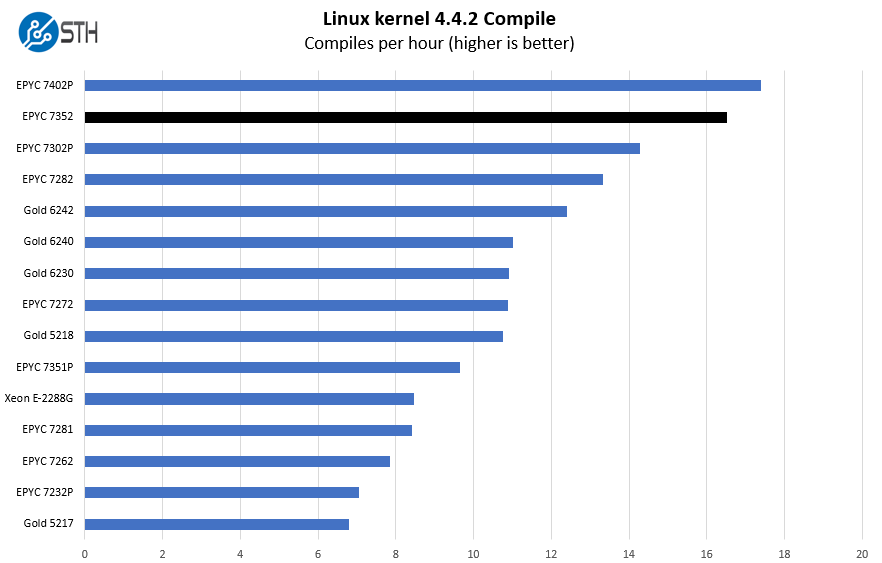
As one can see, the AMD EPYC 7352 is not quite as fast as its 24-core sibling the AMD EPYC 7402P. Still, it is faster than some of the higher-end Intel Xeon Gold series that have twice the list price.
c-ray 1.1 Performance
We have been using c-ray for our performance testing for years now. It is a ray tracing benchmark that is extremely popular to show differences in processors under multi-threaded workloads. We are going to use our 8K results which work well at this end of the performance spectrum.
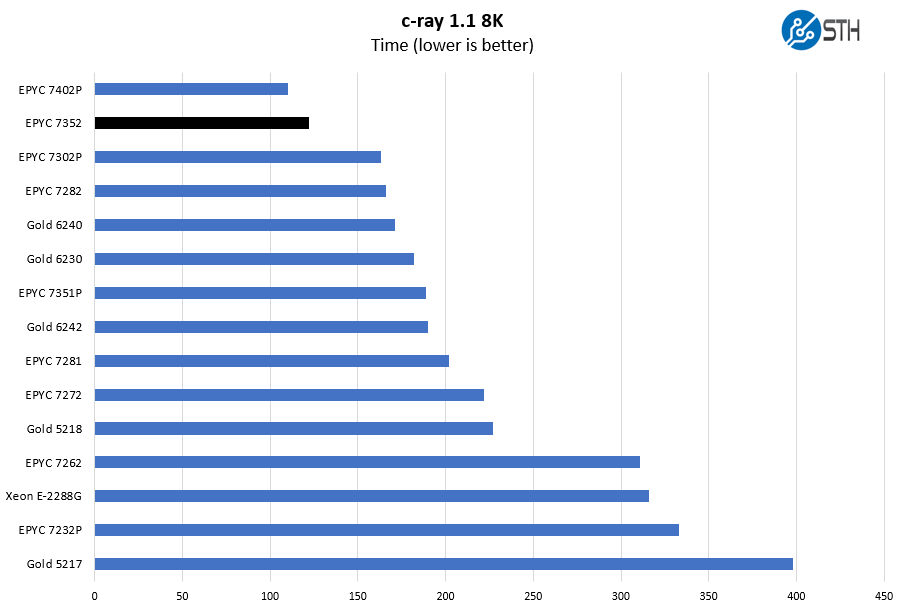
This is a benchmark that tends to favor AMD microarchitectures. Here, the AMD EPYC 7352 performs extremely well. This is also a better way to get relative performance within a line of processors rather than across different lines and vendors.
7-zip Compression Performance
7-zip is a widely used compression/ decompression program that works cross-platform. We started using the program during our early days with Windows testing. It is now part of Linux-Bench.
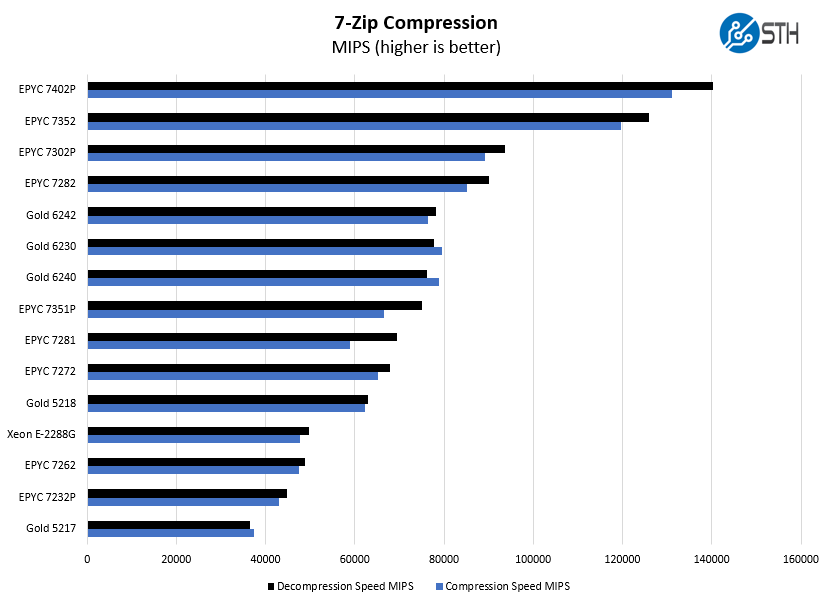
One item that is worth pointing out here is that this generation EPYC 7352 is much closer to the EPYC 7402(P) than the EPYC 7302(P). In the previous generation, the AMD EPYC 7351P was closer to the EPYC 7301. From a model naming convention perspective, the EPCY 7002 series is more confusing since the second digit (the “3”) is not necessarily indicative of processors being close in terms of performance.
NAMD Performance
NAMD is a molecular modeling benchmark developed by the Theoretical and Computational Biophysics Group in the Beckman Institute for Advanced Science and Technology at the University of Illinois at Urbana-Champaign. More information on the benchmark can be found here. With GROMACS we have been working hard to support AVX-512 and AVX2 supporting AMD Zen architecture. Here are the comparison results for the legacy data set:
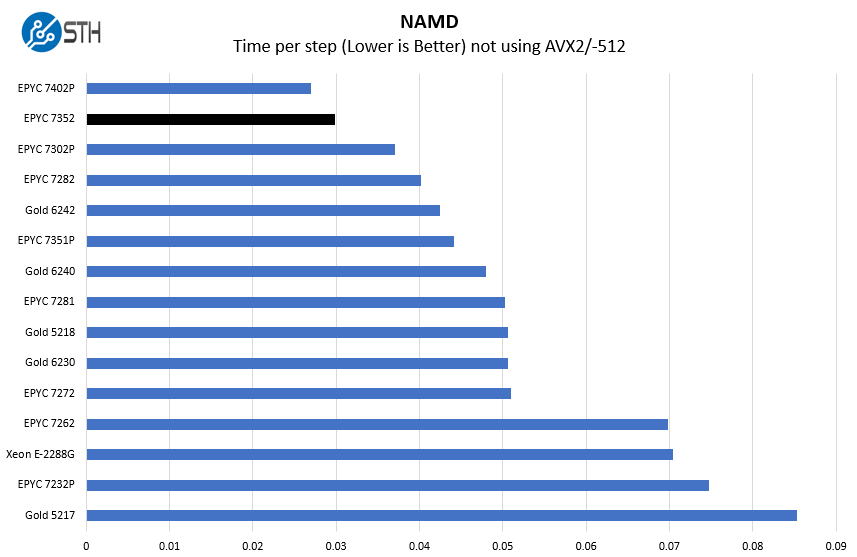
On the NAMD workload, we simply wanted to point out that the delta between a lower-end AMD EPYC 7262 and this EPYC 7352 is quite large. In the context of a complete system, the $775 list price delta is minuscule compared to the performance gained moving up the stack.
OpenSSL Performance
OpenSSL is widely used to secure communications between servers. This is an important protocol in many server stacks. We first look at our sign tests:
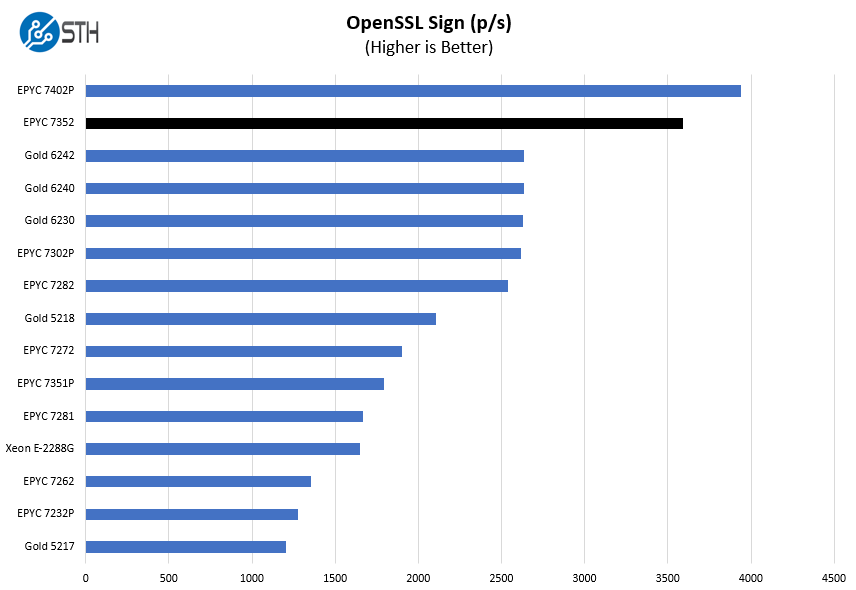
Here are the verify results:
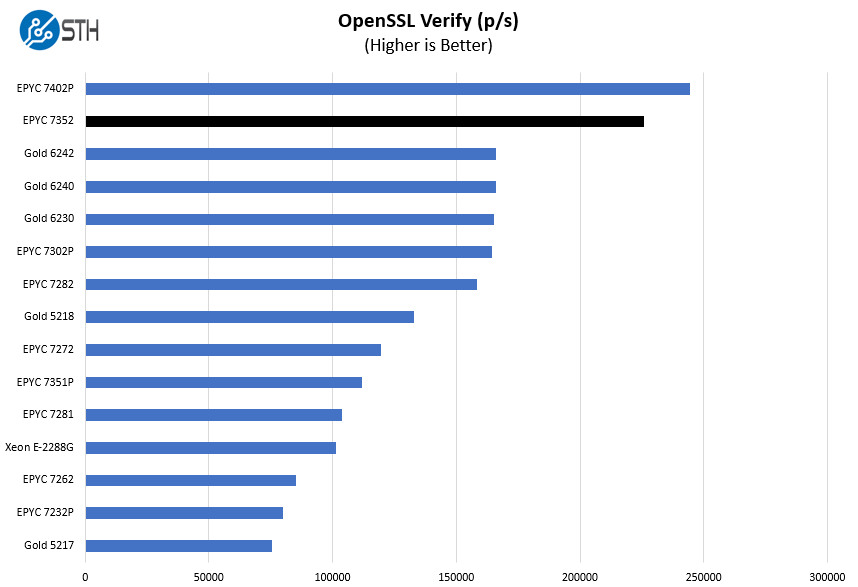
Here we see a tighter grouping based on core counts. With 24 cores, the AMD EPYC 7402P and EPYC 7352 pull away from the other options in our comparison.
UnixBench Dhrystone 2 and Whetstone Benchmarks
Some of the longest-running tests at STH are the venerable UnixBench 5.1.3 Dhrystone 2 and Whetstone results. They are certainly aging, however, we constantly get requests for them, and many angry notes when we leave them out. UnixBench is widely used so we are including it in this data set. Here are the Dhrystone 2 results:
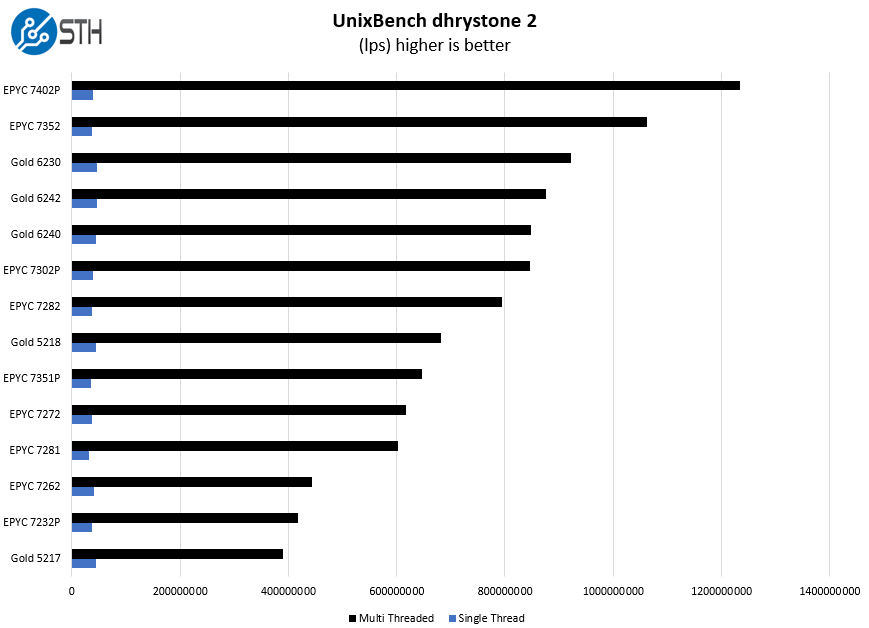
Here are the whetstone results:
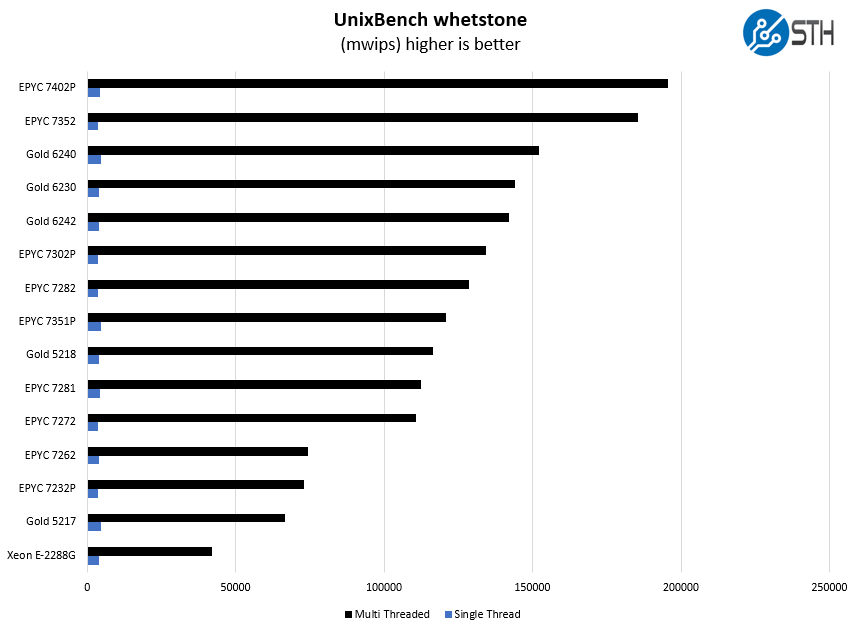
The UnixBench results are getting older, but they follow the same general trend we have seen in our other benchmarks.
Chess Benchmarking
Chess is an interesting use case since it has almost unlimited complexity. Over the years, we have received a number of requests to bring back chess benchmarking. We have been profiling systems and are ready to start sharing results:
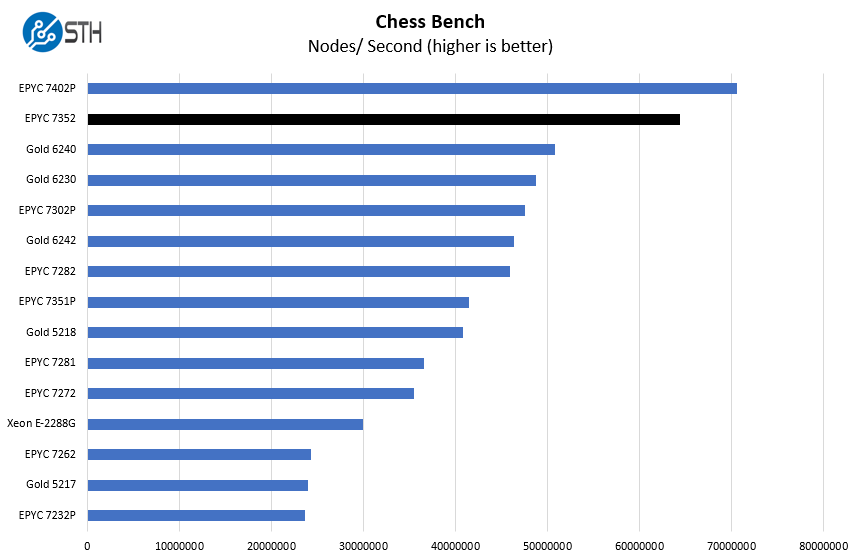
Chess scales well with clock speed and cores. While AMD’s 16 core offerings are quite competitive with Intel’s 16-20 core offerings, once AMD hits 24 cores it is a different story. the EPYC 7352 pulls away.
Next, we are going to look at the AMD EPYC 7352 market positioning before moving to our final words.




Pardon my ignorance. It says “…Since this is a standard part, not a “P” series SKU, one can also use these chips in dual-socket configurations…” and then discusses its performance on a Tyan single-socket motherboard. How?
Hi domih – we only had one CPU to test with. You can use standard parts in single or dual-socket configurations. This is an instance where there is no “P” SKU variant so one would use the standard part for single-socket as well.
We then used single-socket results for comparison points.
Please include the numbers for Threadripper in the future.
Worst results than 7451?..its strange
@Patrick
Thanks for the explanation. I don’t know why but my apparently simple XORing mind thought P = single socket only (correct) and non-P = dual socket only (utterly incorrect). Oops :-)